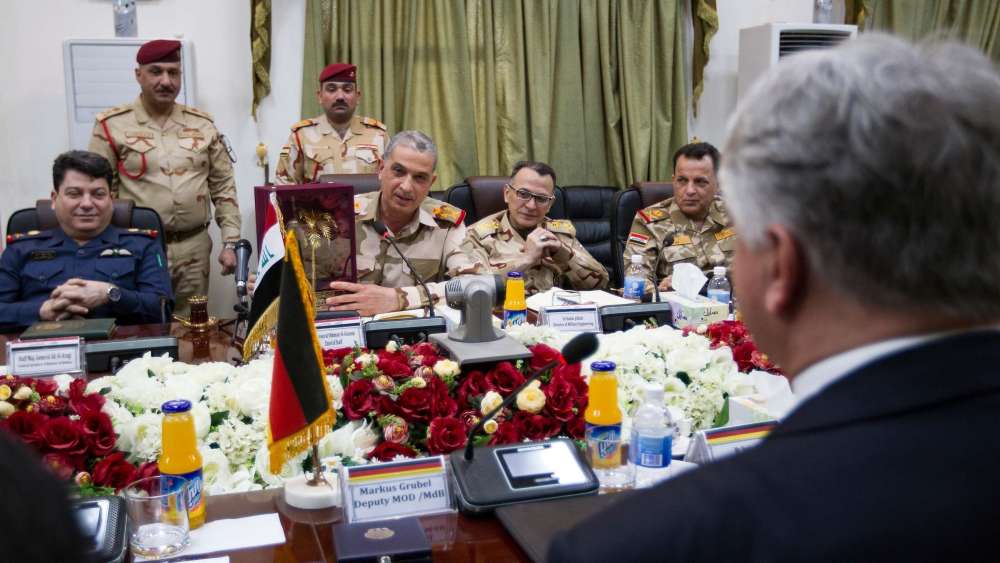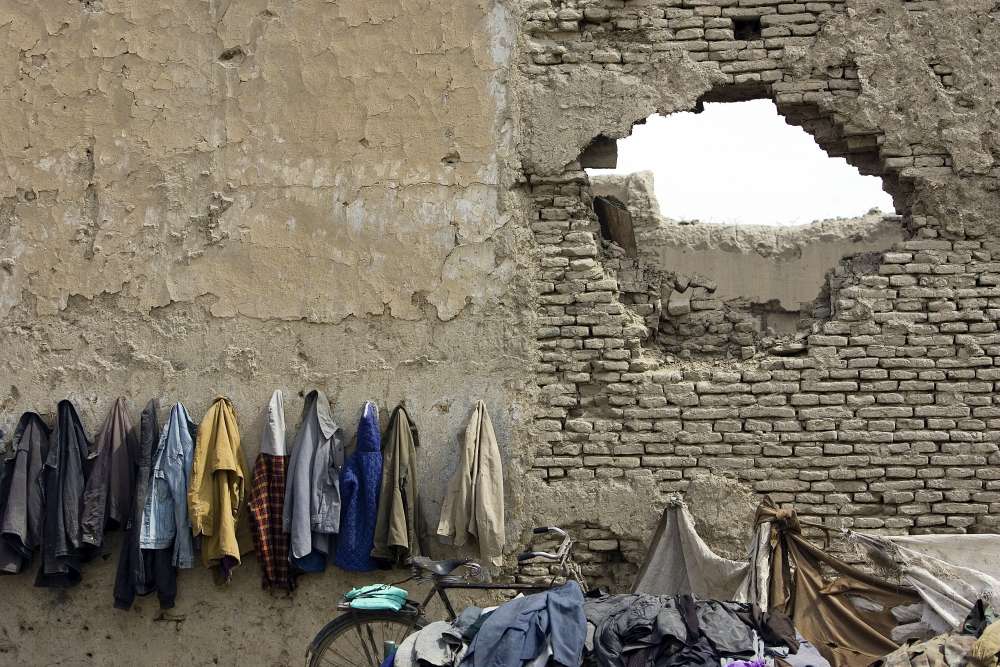Germany in Iraq: Questions to Be Asked and Answered

In 2017, the German government adopted the Guidelines on Preventing Crises, Resolving Conflicts, Building Peace to make its crisis engagement more political, strategic and coherent. Germany’s civilian stabilization efforts in Iraq, as well as the Federal Armed Forces’ deployment in the country – as of this month also in areas beyond the Kurdish north – is an expression of the new government’s commitment to remain engaged in contributing to peace and security worldwide. And yet, the new mandate for the Bundeswehr’s mission in Iraq reveals that the federal government still has work to do in implementing the guidelines: if it wants to avoid appearing arbitrary or directionless, it needs to better communicate its strategy, acknowledge risks, and make room for critical questions.
When the previous government decided to train and equip the Kurdish Peshmerga in 2014, both the strategy and its rationale were quite straightforward, even if weapon transfers to an active conflict zone was a minor revolution in German security policy. The Peshmerga were to be enabled to effectively fight the Islamic State and prevent a genocide against the Yazidi minority. Now that ISIL has been largely defeated on the battlefield, Germany’s interests in Iraq are more difficult to discern. Threats emanate from Iraq’s fragile statehood, its weakened social cohesion and a lack of trust in its state institutions. The rationale behind the guidelines, around which there is ministerial consensus, is to make German engagement in precisely such contexts more political, strategic and coherent.
The federal government should use the guidelines as an operational framework for its involvement in Iraq, both for the Foreign Office’s civilian efforts and any military ‘train and advise’ measures. It is unfortunate, then, that the government fails to mention them in the new Iraq mandate. Their absence lends support to critical voices including that of the Bundeswehrverband, an association of armed forces personnel, who claim that the new mandate is rushed, lacks a political strategy, and fails to define goals.
In fact, the mandate was revamped, above all else, for political reasons: the one-sided support for Kurdish troops in Northern Iraq is no longer tenable without the imminent threat of ISIL, since the Kurdish independence referendum in October 2017 brought political and military fault lines between Baghdad and the Kurdistan Regional Government in Erbil back to the fore. The readjustment of German military involvement in Iraq, however, creates the impression of a government that did not foresee these developments, and is now scrambling for a new area of operations, instead of acting strategically and with foresight.
In the future, the government should openly communicate the potential political consequences of every mission. What are the political circumstances of German involvement? What are foreseeable developments? Which ones are unlikely, but potentially disastrous for our efforts? Communicating these questions and risks at an early stage would help to prepare the government for the continuous adjustment of its efforts.
Take one example: After years of supporting the Peshmerga in the autonomous region of Kurdistan, Germany now has a (military) foot in the door. Instead of abstractly referring to ‘building bridges between Baghdad and Erbil,’ the government should make concrete suggestions: How can the adjusted involvement secure political continuity? For instance, could Germany offer common medical trainings for Peshmerga and Iraqi Security Forces? Could German involvement in Kurdistan be made conditional upon Kurdish parties moving towards an integrated command structure?
According to the guidelines, work in crisis zones and conflicts takes place in a “volatile environment” which “is likely to increase the risks while making impactful assessment difficult”. Such acknowledgment of the difficult conditions in which any crisis engagement takes place is an important sign of progress. A corresponding communication strategy, which provides context for German efforts, thus needs to elaborate more on the mission’s context than the new mandate does. Notably, it fails to acknowledge Iraq’s fragmented security landscape – more than 50 militias rule large parts of the country, often tolerated but unchecked by Baghdad. These armed groups are loyal to various political parties or different regional powers such as Iran, or have been set up by minorities distrustful of the central government. They contribute to the country’s political divisions and increase the probability of the violent escalation of conflicts.
Even if the federal government has no solutions to offer for such problems – or does not want to tread on thin ice diplomatically – it should acknowledge such contextual factors as openly as possible, both in order to paint a complete picture, on the basis of which progress and setbacks will be assessed, and to avoid appearing clueless in the case of subsequent developments: for instance what to do if, counter to current intentions, the quasi-official Popular Mobilization Forces do indeed benefit from German training. It is, after all, a major sign of progress that Germany has the confidence for long-term commitments despite such challenging circumstances, using a wide spectrum of foreign policy instruments in the process.
The government has to step up its efforts when communicating the motivation behind its commitments. What are our aims? Which instruments do we have at our disposal? Based on a matter-of-fact analysis of the context of one’s mission, the government needs to allow for critical questions: Which risks does the involvement carry? If we see the militias as problematic actors – what is necessary to weaken their role? Or: Should we strengthen their legitimacy?
The guidelines offer a starting point for answering such questions. However, we still lack the institutional framework needed for a holistic Iraq strategy. This is not for lack of useful suggestions: Christian Thiels, for instance, proposed the establishment of a cabinet-level national security advisor in whom competencies for crisis engagement would converge, or the appointment of a special inspector for every mission. But even without such reforms a coherent Iraq strategy could be created through an inter-ministerial strategy development process, as set out in the guidelines. In doing so, the government should follow three premises.
First, involvement in fragile contexts must be based on a political strategy. How can it be ensured that critical questions about political conditions are continuously asked? What role will be played by the Iraqi armed forces in the future? Is there a risk of the Iraqi government reverting to the divisive policies that contributed considerably to the marginalization of the Sunni population and the rise of ISIL?
Second, we need concrete yet flexible goals. Which incentives are necessary to define and communicate realistic goals – and to adapt them – if necessary? This may reveal synergies: Could the military’s counter IED training be linked with the Foreign Office’s community policing initiative? Do different ministries’ goals conflict? Which of the government’s instruments can accommodate unforeseen developments?
Third, how can the different ministries convey that, while the long-term consequences and effectiveness of involvement are hard to gauge, we should nevertheless get involved? This could work if every activity was linked to a theory of change, which outlines how every activity is supposed to contribute to, for instance, the strengthening of the state, and how it can be adapted to changing circumstances. However, this will only work if all ministries adhere to the comprehensive approach and evaluate the effects of their instruments against the background of the situation as a whole rather than their own specific priorities. Promoting peace in a country like Iraq is complicated and even the best instruments won’t eliminate the risks – that is not the government’s fault. Still, to avoid appearing arbitrary or aimless, the government must communicate a comprehensive approach by asking the right questions and debating their answers. The guidelines offer the right framework to do this. Not only do they aim at better crisis prevention, conflict resolution, and peace building; they also represent an important consensus among the ministries, which the government must not let fall to the wayside.
…
A German version of this commentary was published on the PeaceLab Blog on March 21, 2018.







